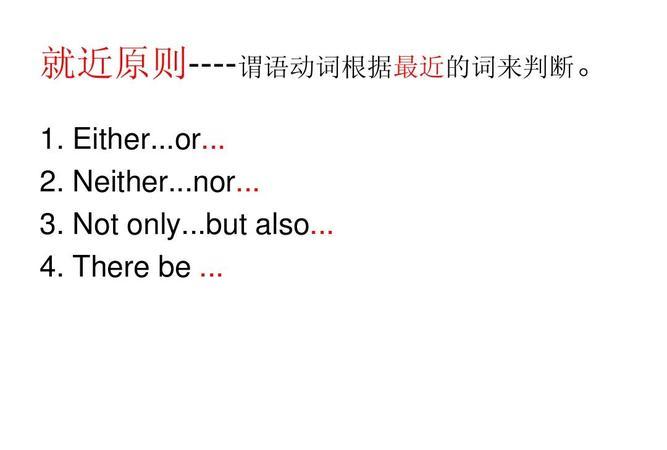英语中的"Neither"用于表示两个或多个事物都不符合某种情况或状态。主要用法包括在否定句中表示"也不",在肯定句中表示"也不是",以及在回答中表示"也不是"。注意,如果使用否定词"not",则不能再使用"Neither"。如果回答是肯定的,也不能使用"Neither"。

用法1:在否定句中表示“也不”
当我们想表达两个事物都不是某种情况或状态时,可以使用“Neither...nor...”的结构。例如:
- Neither John nor Mary is coming to the party tonight.(约翰和玛丽今晚都不来参加聚会。)
- I like neither coffee nor tea.(我既不喜欢咖啡也不喜欢茶。)
需要注意的是,如果我们使用否定词not,就不能再使用Neither了。例如:
- John is not coming to the party tonight.(约翰今晚不来参加聚会。)
- Neither John is coming to the party tonight.(错误的表达方式)
用法2:在肯定句中表示“也不是”
当我们想表示某个事物不是某种情况或状态时,可以使用“Neither...nor...”的结构,但这时需要将句子改为肯定句,并在句子前面加上助动词do或does。例如:
- I do neither smoke nor drink.(我既不吸烟也不喝酒。)
- He does neither speak French nor German.(他既不会说法语也不会说德语。)
需要注意的是,如果我们使用否定词not,就不能再使用Neither了。例如:
- I don't smoke or drink.(我不吸烟也不喝酒。)
- I neither smoke nor drink.(错误的表达方式)
用法3:在回答中表示“也不是”
当我们被问及某个事物是不是某种情况或状态时,可以使用“Neither”来表示不是。例如:
- A: Did you see the movie last night? B: Neither did I.(我也没有看那部电影。)
- A: Is Mary from New York? B: Neither is she.(她也不是来自纽约。)
需要注意的是,如果我们的回答是肯定的,就不能使用Neither。例如:
- A: Did you have a good time at the party last night? B: Yes, I did.(是的,我玩得很开心。) B: Neither did I.(错误的表达方式)

